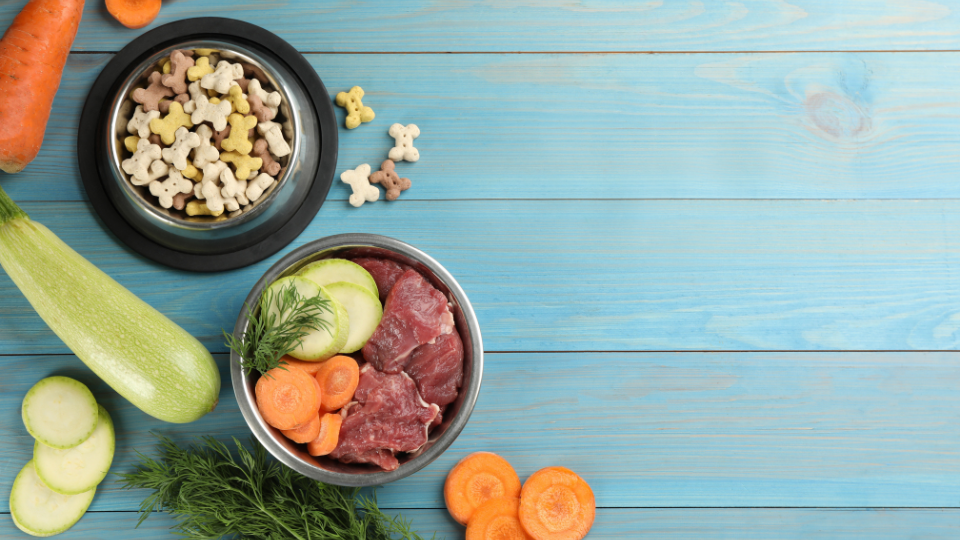Claims regarding raw pet food: reality and myths

Raw pet food is claimed as being highly palatable and improving fecal consistency, but some effects on pet health have yet to be understood.
Over the past decade, numerous highly publicized recalls of pet food have raised concerns among pet owners regarding extruded and canned pet foods. In fact, many owners are looking for alternative feeding solutions for cats and dogs. Biologically appropriate raw food (BARF) appears to be among the favorite alternatives that pet parents are turning to.
Digestibility
Raw pet food – BARF – has become increasingly popular among pet owners trying to feed their pets a natural and healthy diet. Promoted health claims include improved vitality, digestive tract health, and a better functioning immune system. Nevertheless, there is a substantial lack of scientific proof to back such claims.
Raw meat diets have a higher apparent macronutrient digestibility compared to extruded diets. This may increase the bioavailability of nutrients. Nevertheless, no difference in digestibility has been noted when compared to short thermal processing (being household cooking).
Misleading claims?
The often-used claim ‘human grade’ for BARF diets is misleading. For starters, EU regulations regarding pet food are quite clear on this point: pet food ingredients are regarded as Category 3 by-products of animal origin. As such, they fall under a specific set of regulations which inhibits them from being called ‘human grade’.
Category 3 materials include parts of animals that have been passed fit, but which are not intended for human consumption. However, pet food regulations differ from one part of the world to another, and may not be as strict elsewhere as they are in Europe.
Keeping tabs on pathogens
Many pet food manufacturers use high-pressure pasteurization (HPP) to control pathogens in BARF. However, it has been proven that this process is not bulletproof.
Certain bacterial strains are pressure-resistant and may recover after HPP in the food matrix during certain storage conditions. Therefore, commercial HPP applications for raw meat should be performed for several minutes at a high-pressure range, in order to assure microbiological safety. However, such longer processing can be quite costly and can ultimately alter meat texture and appearance.
Not meeting the standards
Concerns have been raised by veterinary medical associations regarding BARF diets. Many outbreaks of salmonellosis, yersiniosis and brucellosis in dogs and cats are attributed to BARF diets.
Similarly, a study by Nüesch-Inderbinen (2019) pointed out the presence of antibiotic-resistant strains of pathogens in BARF diets. The study found that 72.5% of the samples researched did not meet pertinent microbiological standards. And antimicrobial resistant bacteria were found in 62.7% of the samples.
Health risks
In addition, research points out public health risks when it comes to feeding a raw diet to pets, dogs and cats living in households. Although the manufacturing of raw pet food is subject to strict microbiological hygiene criteria (the EU animal by-products regulations), there are still concerns over raw meat product safety. It is worth noting that some pets may shed pathogens with no clinical symptoms and may therefore act as carriers and pose zoonotic risks to their owners.
For this reason, it is essential, when feeding BARF diets, to have careful and sound handling and hygiene procedures to avoid the spread of zoonotic bacteria. It is advised that pets should not be fed BARF diets while they are being treated with antimicrobials, as this could increase the risk of resistant strains developing.
Pets in families with infants, elderly or immuno- compromised individuals should take great care when sharing the household with a BARF fed pet, as these groups are more susceptible to infections.
Home preparation of pet food
Despite vast choices of readily available commercial diets formulated to meet the nutritional requirements of different categories and ages of pets, some owners choose to prepare their pet’s food at home.
And the trend appears to be on the rise. A OnePoll survey concludes that nearly two-thirds of pet owners (64%) cook a separate meal for their dog at least 3 times a week.
A properly formulated and cooked homemade diet can be of great benefit to pet health. This is especially the case for pets with nutritionally responsive diseases, for which there is no suitable commercial therapeutic diet. However, there is a significant risk of nutrient insufficiencies, excesses and imbalances in homemade diets when the recipe is from an untrusted and unreviewed source.
What the scientists say
It has been proven by multiple studies that there is a high chance of a pet’s diet ending up unbalanced if the recipe is not developed by a certified veterinary nutritionist. A 2019 survey by Morelli identified that only 8% of respondents relied on veterinarians for formulating their pet’s BARF diet.
Examples of nutritional imbalances include taurine deficiency, vitamin A and D intoxication or deficiencies, and nutritional secondary hyperparathyroidism as a result of calcium deficiency. Hyperthyroidism can also occur when pets are fed raw laryngeal meat containing thyroid tissue.
Also, because of an unbalanced calcium-phosphorus ratio, or improper concentration, growth-related pathologies of the skeletal system can occur in fast-growing large and giant breed puppies.
Feeding animals suffering from kidney disease a BARF diet, which is high in protein and phosphorus, can lead to faster disease progression. Feeding bones can lead to suffocation, damage to the digestive tract, and constipation. Feeding a high-fat diet (as a BARF diet can often reach up to 40% of fat on a dry matter basis) can trigger pancreatitis in susceptible dogs and is not recommended in cases of gastritis or other chronic gastrointestinal pathologies (for instance: IBD, lymphangiectasia).
Balance is the key
Feeding pets a complete and balanced diet is the best way to meet their nutritional needs. Careful selection of ingredients, and processing optimization while maintaining a safe and pathogen-free product is key.
When all these factors are correctly balanced, it is possible to obtain excellent pet food that supports pet wellness, health and longevity
